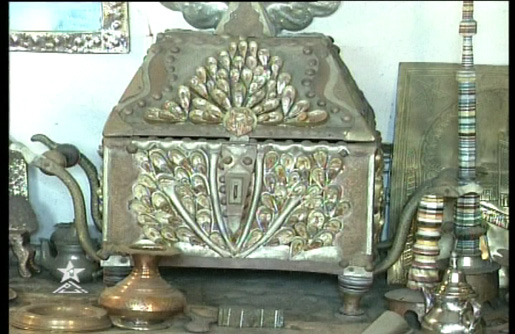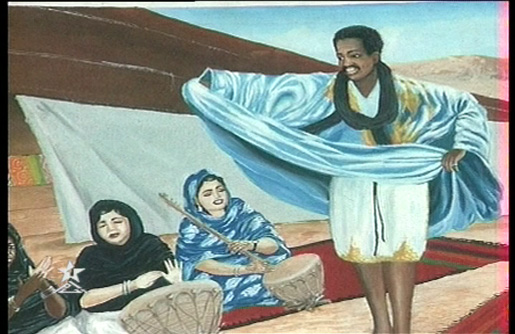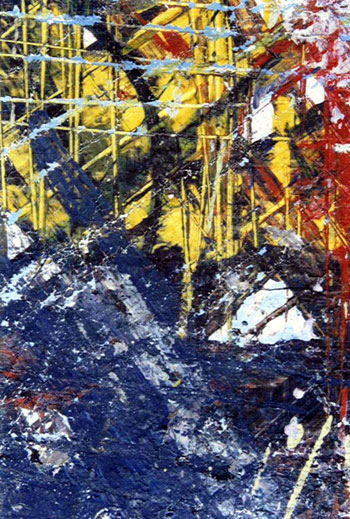Plastic arts
In the Southern Provinces, plastic arts is linked to many traditional crafts, in which manufacturers craftsmen use many traditional tools and supplies used by artists to produce paintings. The artistic and aesthetic topics and issues tackled are expressed spontaneously and purely.

Utensils and tools of traditional products industry desert
The city of Laayoune is witnessing a metamorphosis in the field of plastic arts since it hosts many plastic arts practitioners. However, the city's arts and in other regions of the desert are still based on painting and coloration art, in the absence of almost all other plastic, arts such as sculpture, graphics, photography and ceramics, among others.

One of Ibrahim Al Hayssan works (Laayoune)
The most important artistic feature in Laayoune is the wide disparity in producing a plastic work in the sense that some plastic works reflect the presence of many methods borrowed from contemporary directions such as marks, symbols prints, impacts and the Arabic calligraphy. Other works are inspired by the pure Arab heritage and popular and local culture and heritage in their aesthetic and expressive dimensions.

One of Abderhaman Hayda works (Laayoune)
Among the special characteristics of the plastic art scene in the southern provinces in general and the city of Laayoune in particular, there is the realistic rendering represented by the paintings of Abdel Rahman Hayda which depict many scenes from the everyday life in Sahara, and many aspects of the customs and rituals of their owners.

One of Abderhaman Hayda works (Laayoune)
In addition to the academic realistic portrays there is the abstract experience by the artist and critic Ibrahim Al Hussein attempt, which is characterized by the musical and poetic use of colors, according to free and dynamic formulations and combinations. He works on Malhfa habits worn by Sahrawi women as the main subject of his works.

One of Ibrahim Al Hayssan works (Laayoune)
Studies on Plastic Art
The Pleasure of the Text
Roland Barthes 1.
Can we talk about text pleasure in Plastic arts?
If so, what are the characteristics of such "pleasure" and What are its conditions?
Who created it? .. Is it the artist? the reader? Or the creative article itself?
There is no doubt that a plastic (or sculptured) work is also a creation.. However, this text is ruled by a silent expression pattern (non-verbal), which makes it represent, semantically speaking, a field full of visual symbolic and descriptive connotations and meanings…
According to this classification, where the concept pleasure is determined (or visual pleasure from the point of view of Kant)?
Of course, we cannot talk about such "pleasure" without talking about the nature of the relationship between the consumed source / painting and the consumer source/ audience .. This relationship plays a prominent role by the reader through conciliation between two elements:
- The painting as visible and tangible base.
- The artist himself, his subjective effects and impressions and tangible messages.
